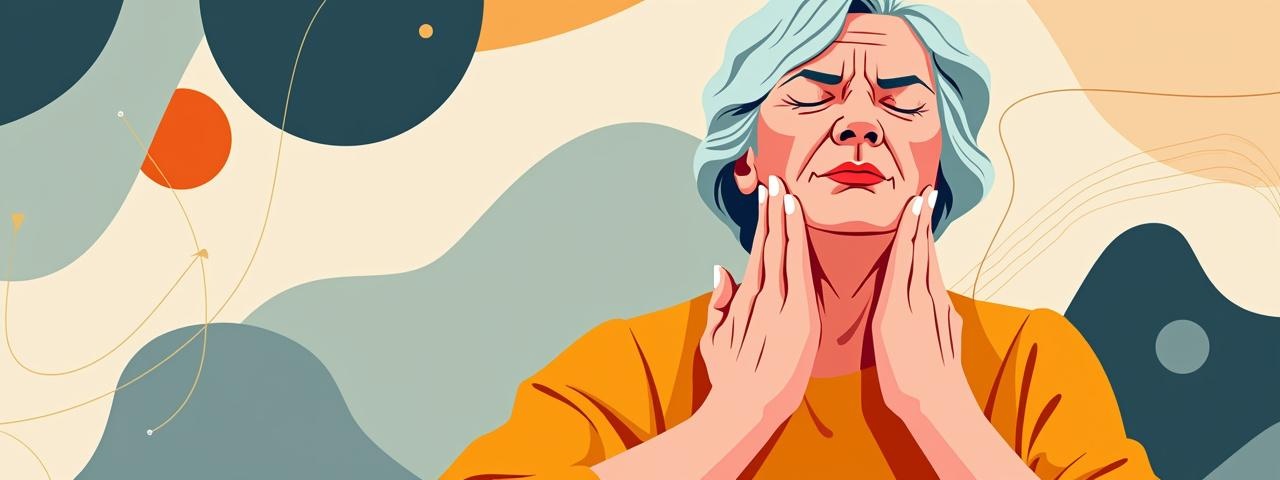
Key Takeaways
- Over 5 million Canadians live with migraine, costing the nation more than $4.5 billion annually in direct and indirect expenses
- The Watson Headache Approach is the only manual cervical technique scientifically proven to desensitize the brainstem, addressing the root neurological disorder
- Approximately 90% of patients experience reproduction and resolution of their typical head pain during the initial examination
- Treatment typically requires only 4-5 sessions, with patients averaging 72 fewer medications per year following completion
- Limited availability exists in Canada with only one certified practitioner currently offering this revolutionary approach
Table of Contents
- The Burden of Headache Disorders in Canada and Why New Solutions Matter
- Understanding the Watson Headache Approach: Revolutionary Treatment Method
- Treatment Process, Clinical Outcomes, and Long-Term Results
- Access in Canada and Integration with Healthcare System
The Burden of Headache Disorders in Canada and Why New Solutions Matter
The scale of headache disorders in Canada presents a sobering picture of both human suffering and economic impact. More than 5 million Canadians, representing approximately 14% of the population, currently live with migraine. According to Migraine Canada, prevalence estimates consistently range from 8.3% to 10.2% across different studies, making this one of the most common chronic conditions affecting Canadians today.
The reach extends into Canadian households with alarming frequency. One in four Canadian households includes at least one family member who suffers from migraine, creating ripple effects that touch children, partners, and caregivers. Gender disparities reveal a striking pattern: 15% of women and 8% of men experience migraine globally, while 10% of children deal with migraine symptoms that can disrupt education and development.
Diagnosis remains a significant challenge despite the prevalence of this condition. Only 40% of migraine sufferers receive an accurate diagnosis, leaving the majority to navigate their symptoms without proper medical recognition or treatment strategies. This diagnostic gap contributes to prolonged suffering and delayed access to effective interventions.
The economic consequences reach staggering proportions. Chronic migraine costs $25,688.89 per year per patient, while episodic migraine (occurring 4-7 days per month) generates costs of $15,651.34 per patient annually. These figures encompass both direct medical expenses and indirect costs such as lost productivity. The total national burden exceeds $4.5 billion annually, with chronic migraine alone accounting for over $2 billion and episodic migraine adding another $2.5 billion.
Direct medical costs paint a clear picture of healthcare system strain. Chronic migraine patients incur $1,883 annually in direct medical costs compared to $687 for episodic migraine patients. These expenses include physician visits, emergency room utilization, diagnostic testing, and pharmaceutical interventions. Beyond direct costs, migraine ranks third among chronic medical conditions for work absenteeism in Canada, trailing only back problems and mood disorders.
Mental health comorbidities compound the burden significantly. Individuals with chronic headache disorders experience elevated rates of depression, anxiety, and increased suicide risk. This interconnection between neurological and psychological symptoms creates complex clinical presentations that require comprehensive treatment approaches. The relationship works bidirectionally, with mental health conditions potentially exacerbating headache patterns while chronic pain undermines emotional wellbeing.
Traditional treatment approaches frequently emphasize pharmaceutical management, which addresses symptoms without necessarily targeting underlying mechanisms. Medication overuse itself can paradoxically worsen headache patterns, creating a cycle that proves difficult to break. This reality underscores the urgent need for alternative interventions that address root causes rather than merely suppressing symptoms.
Understanding the Watson Headache Approach: Revolutionary Treatment Method
The Watson Headache Approach emerged from the clinical research of Australian physiotherapist Dr. Dean Watson, who identified a previously unrecognized pattern of upper cervical musculoskeletal dysfunction. This discovery fundamentally changed how practitioners understand the relationship between neck structures and head pain, moving beyond simplistic biomechanical models to address complex neurological interactions.
What distinguishes this method from countless other headache treatments is its status as the only manual cervical approach scientifically validated to diminish the sensitized brainstem. This represents the underlying neurological disorder present in migraine and many other headache types. Rather than simply addressing tight muscles or misaligned joints, the approach targets the central nervous system processing that maintains chronic headache patterns.
The technique employs a non-manipulative philosophy that stands in sharp contrast to traditional chiropractic or osteopathic adjustments. There's no clicking, cracking, or forceful manipulation involved. Instead, practitioners apply a "less is more" principle, using sustained, gentle pressure to specific anatomical structures. This conservative approach minimizes risks while maximizing therapeutic effects through precise neurological targeting.
Treatment focuses specifically on the C1-C3 spinal segments, particularly the atlantooccipital joint where the skull meets the spine and the C2-3 segments just below. Research has identified these regions as critical convergence zones where cervical nerve signals interact with trigeminal nerve pathways. The trigeminal nerve supplies sensation to the face and head, making this interaction point crucial for understanding referred pain patterns.
During initial consultations, over 80% of patients recognize the causative neck dysfunction when practitioners apply precise assessment techniques. This immediate recognition provides both diagnostic clarity and therapeutic validation. Patients often express relief at finally understanding why their headaches persist despite normal imaging studies and numerous failed treatments.
The neurological basis centers on the trigeminocervical nucleus, a region in the upper spinal cord and lower brainstem where cervical nerve signals from C1-C3 converge with trigeminal nerve pathways. This convergence explains why dysfunction in neck structures can generate pain perceived in the head, face, and even behind the eyes. The brain cannot distinguish whether incoming pain signals originate from cervical structures or trigeminal regions because they share common neural pathways.
Scientific validation comes from studies demonstrating modification of the nociceptive blink reflex, a measurable neurological response that cannot be influenced by placebo effects. This objective evidence strengthens the physiological rationale supporting the approach. Research published in Cephalalgia observed head pain referral in all tension-type headache patients and nearly all migraine patients during examination, compared to only 57% of control subjects without headache disorders.
The C2-3 joint has been identified as the source of pain in 62% of cases examined in clinical studies. When practitioners apply precise manual therapy to this segment, headache symptoms are alleviated in 75% of patients. These remarkably high success rates reflect the fundamental role that upper cervical dysfunction plays in many chronic headache presentations, even those previously diagnosed as purely neurological or vascular conditions.
Treatment Process, Clinical Outcomes, and Long-Term Results
The treatment journey begins with a comprehensive initial assessment lasting approximately one hour. This thorough evaluation examines headache patterns, medical history, previous treatments, aggravating and relieving factors, and physical examination findings. Practitioners gather detailed information about pain quality, location, frequency, intensity, and associated symptoms to build a complete clinical picture.
The core technique involves applying sustained pressure to specific cervical structures, typically the posterior edge of C1 or the articular pillar of C2, while positioning the head in slight rotation. This precise positioning and pressure application serves dual purposes: assessment and treatment. The practitioner monitors for reproduction of the patient's familiar headache symptoms, followed by gradual resolution as pressure is maintained.
Successful reproduction of familiar headache symptoms followed by their diminishment indicates that the practitioner has identified a contributing dysfunction. This cause-and-effect relationship provides immediate feedback about treatment relevance. Patients often describe this moment as revelatory, finally understanding that structural dysfunction drives their symptoms rather than mysterious or purely psychological factors.
The treatment schedule typically follows a specific progression. Trial treatments occur on day one to assess responsiveness and establish baseline changes. Two appointments follow during the next week to build on initial improvements while the nervous system remains responsive. Subsequently, weekly sessions continue as needed, with most patients requiring 4-5 total sessions to achieve substantial, lasting improvement.
Clinical outcomes demonstrate impressive effectiveness. Approximately 90% of patients experience reproduction and resolution of their typical head pain during the examination itself. This immediate response rate far exceeds that of most headache interventions and provides strong prognostic indicators for treatment success.
Long-term follow-up data reveals sustained benefits extending well beyond the treatment period. At 12-month follow-up, patients averaged 72 fewer medications per person per year following treatment completion. This dramatic reduction in pharmaceutical dependence represents both cost savings and decreased exposure to medication side effects, which can include gastrointestinal problems, rebound headaches, and cardiovascular risks.
Retention rates speak to patient satisfaction and perceived value. Studies document 96.25% retention at 8-week follow-up and 100% at 4-week assessment. These figures indicate that patients continue engaging with the treatment approach because they experience meaningful benefits. Treatment adherence reaches 95%, with patients completing all scheduled sessions, while satisfaction rates range from 97.5% to 100% across different studies.
Meta-analysis results comparing manual therapy to control conditions provide robust evidence of effectiveness. Manual therapy reduces headache frequency by 0.93 episodes per week compared to sham treatment and by 1.23 episodes per week compared to no treatment. These reductions may sound modest numerically, but they represent substantial quality-of-life improvements for individuals living with chronic or frequent headaches.
Headache intensity improvements average 1.63 points on a 10-point scale, with moderate-certainty evidence supporting this finding. Pain reduction of this magnitude often represents the difference between debilitating pain that prevents function and manageable discomfort that allows continued activity. For individuals with severe migraines, dropping from 8/10 pain to 6/10 can mean the difference between bed rest and maintaining employment or family responsibilities.
Treatment extends beyond hands-on manual therapy to include self-management strategies, exercise programs, postural corrections, and trigger identification education. This comprehensive approach empowers patients to maintain improvements and potentially prevent recurrences. Exercise programs typically focus on neck stabilization, upper thoracic mobility, and postural endurance to address the musculoskeletal factors that may predispose individuals to cervical dysfunction.
Postural corrections prove particularly relevant in modern society where prolonged sitting, computer use, and smartphone habits place sustained stress on upper cervical structures. Practitioners teach patients to recognize and modify problematic postures throughout daily activities. Trigger identification helps patients understand specific factors that exacerbate their headaches, including dietary elements, sleep patterns, stress responses, and environmental factors.
Access in Canada and Integration with Healthcare System
Despite the promising evidence supporting the Watson Headache Approach, access remains severely limited across Canada. Currently, only one Watson Headache Certified Practitioner operates in Canada: Keith Fernandes in Toronto. This creates an inadequate practitioner-to-patient ratio considering that millions of Canadians could potentially benefit from this intervention.
Fernandes completed advanced training directly with Dr. Dean Watson, supplemented by specialized training in Spain, Italy, and Australia. This extensive international education ensures mastery of the technique's subtleties and nuances. However, his solitary status highlights a critical gap in Canadian healthcare accessibility. Individuals residing outside the Toronto area face significant geographic barriers to accessing this treatment option.
Geographic barriers create particular challenges for rural and remote populations, who already experience reduced access to specialized healthcare services. Residents of provinces without certified practitioners must either forgo treatment entirely or incur substantial travel expenses and time commitments to access care. This geographic inequity contradicts principles of universal healthcare access that Canada strives to uphold.
The approach is taught to physiotherapists, chiropractors, and osteopaths in over 25 countries, demonstrating its adaptability across different professional frameworks and regulatory environments. This international presence suggests potential for significant expansion within Canada. Training additional Canadian practitioners could rapidly improve accessibility and reduce wait times for those seeking non-pharmaceutical headache interventions.
The Watson Headache Approach aligns closely with Canadian healthcare priorities. It represents an evidence-based treatment that reduces long-term costs and medication dependence. Healthcare systems increasingly recognize that sustainable solutions must address underlying dysfunction rather than indefinitely managing symptoms with pharmaceuticals. Cost-effectiveness analyses consistently favor interventions that reduce ongoing medication use and prevent emergency department utilization.
A collaborative care model characterizes how Watson Headache practitioners interact with the broader healthcare system. Practitioners maintain communication with patients' medical teams, providing consultation reports that detail findings, treatment progress, and recommendations. This integration ensures continuity of care and allows physicians to make informed decisions about medication adjustments or additional investigations if needed.
Training additional Canadian practitioners could address the current shortage while improving accessibility nationwide. Educational programs could be established at Canadian universities offering physiotherapy, chiropractic, or osteopathic training. Continuing education courses could upskill existing practitioners who already possess strong manual therapy foundations. Professional associations could facilitate this expansion by recognizing the approach and supporting member education.
Potential cost savings extend across multiple domains. Reduced emergency department visits would decrease acute care expenses, which represent some of the highest per-episode costs in healthcare systems. Decreased pharmaceutical costs would benefit both patients and public drug plans. Improved workforce productivity would generate economic benefits throughout society as individuals with chronic headaches return to full function.
Integration with existing physiotherapy services represents a natural pathway for expansion. Many physiotherapy clinics already treat musculoskeletal conditions and possess the equipment and infrastructure needed to deliver Watson Headache interventions. Adding this specialized assessment and treatment approach would enhance service offerings without requiring extensive new resources.
Insurance coverage represents another consideration for accessibility. Many private health insurance plans cover physiotherapy services, making the Watson Headache Approach financially accessible to individuals with employment-based benefits. Provincial healthcare programs might consider coverage given the potential for cost offsets through reduced medication use and emergency visits. Cost-benefit analyses could demonstrate the fiscal wisdom of funding preventive and curative interventions rather than indefinitely supporting symptom management.
Patient advocacy organizations play a crucial role in raising awareness and pushing for expanded access. Migraine Canada and similar groups could champion the Watson Headache Approach by educating members about this option and advocating for increased practitioner training. Testimonials from successfully treated patients provide powerful narratives that motivate policy changes and resource allocation.
Research conducted within Canadian settings would strengthen the evidence base and build confidence among healthcare decision-makers. Collaborative studies between Watson Headache practitioners and academic medical centers could document outcomes specifically for Canadian populations. This domestically generated evidence often carries more weight with policymakers than international studies, even when methodological quality is comparable.
The current moment presents an opportunity for strategic expansion. Growing recognition of chronic pain as a public health priority, combined with concerns about opioid dependence and medication overuse, creates receptivity toward non-pharmaceutical interventions. Healthcare systems seek proven alternatives that address root causes rather than merely suppressing symptoms. The Watson Headache Approach fits squarely within this paradigm shift.
Professional development pathways could be established to create a pipeline of qualified practitioners. Entry-level certification might enable practitioners to perform basic assessments and treatments under supervision, while advanced certification would designate full independence and teaching capability. This tiered approach would accelerate workforce development while maintaining quality standards.
Telehealth applications might supplement hands-on treatment for certain aspects of care. Initial consultations could include virtual components where practitioners review medical history and previous imaging. Follow-up sessions might incorporate video guidance for home exercises and self-management strategies. While the core manual therapy requires in-person contact, hybrid models could reduce travel burdens and improve access for geographically distant patients.
Public awareness campaigns could educate Canadians about the connection between neck dysfunction and headaches. Many individuals never consider that their migraines might have a cervical component, particularly when imaging studies appear normal. Understanding this possibility prompts individuals to seek appropriate assessment rather than resigning themselves to lifelong pharmaceutical management.
The Watson Headache Approach represents more than just another treatment option. It embodies a fundamental reconceptualization of headache disorders, recognizing the central role of upper cervical dysfunction in conditions previously considered purely neurological or vascular. This paradigm shift has profound implications for diagnosis, treatment selection, and long-term management strategies.
For the millions of Canadians living with chronic headaches, expanded access to this approach could transform quality of life. Reduced pain frequency and intensity enables fuller participation in work, family, and recreational activities. Decreased medication dependence minimizes side effects and long-term health risks. Empowerment through self-management strategies restores a sense of control that chronic pain often strips away.
If you're among the millions of Canadians struggling with persistent headaches or migraines that haven't responded adequately to conventional treatments, specialized assessment may reveal cervical contributions that have been overlooked. The Watson Headache Approach offers a scientifically validated, gentle, and effective alternative to pharmaceutical management alone. Don't let geographic limitations or lack of awareness prevent you from exploring this revolutionary treatment method. Contact a qualified practitioner today to discover whether headache relief through precise cervical intervention could finally provide the lasting improvement you've been seeking. Your path beyond chronic head pain may be closer than you think.
Featured Articles
7 Tennis Elbow Exercises to Treat Your Pain at Home

9 Best Exercises for TMJ Pain Relief

Different Types of Massage Therapies and Their Benefits

ICBC Physiotherapy: Accessing Treatment During your First 12 weeks of Recovery

Discover Relief with Watson Headache Approach

